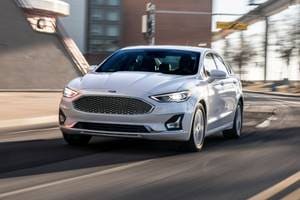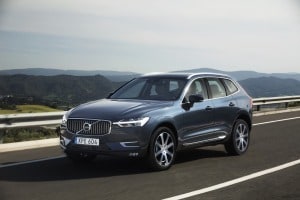Reviewing the Super Bowl, Part One
Looking at the ratings, it seems that almost one in every two households in America was tuned to the Super Bowl last Sunday. They were treated to the first ever Super Bowl power outage, 30 minutes of announcers struggling valiantly to be interesting and a second half that was one of the Super Bowl's best.
In what has become as much a part of the Super Bowl as the game itself, the audience was also treated to a display of commercials; the best of which entertained us, will be remembered by us and, in a few cases, even moved us.
As the Super Bowl has solidified as the Academy Awards of advertising, it has gotten harder for spots to achieve the spark of originality that the very best offer. In fact, many, if not most, seem almost a parody; almost as if there was a "Super Bowl Ads for Dummies" book the advertisers' agency relied on for inspiration.
Of course, with the Academy Awards, it is the "Academy" that determines the winners. With the Super Bowl, there are thousands of ways a list of winners can be determined. We could start with the "experts" that watch the spots and declare their personal winners list, or we could look at the polls that are run during and after the game. Today, we can measure YouTube views, or Twitter tweets.
I can't help thinking that all these measures are about the commercial, not the product the commercial should be selling. Not "selling" in the sense that consumers should always be ready to place an order when the commercial is over, but commercials should plant an idea, they should say something about a product that surprises us, or reminds us of something we have forgotten. Most importantly, they should compel us to want to learn more.
Put in this context you can see why, for many auto marketers, the analysis Edmunds.com releases pre, during and post-game, and for the week after, is so compelling. Over the years, Edmunds.com has become the go-to resource for consumers when they want to learn more about cars. If they want to know more about an interesting car they spotted on the road, they end up on Edmunds.com to find out more about it. (Note to those folks: Please only visit our site after you have safely parked the car you were driving.) If they are talking about cars with their friends, they will end up on Edmunds to verify (or challenge) what they heard. Some people come directly to Edmunds.com; others use a search engine and find us because our huge breadth of content puts us at the top of the rankings for essentially every automotive term.
Of course, Edmunds.com is not the only place that consumers will visit when learning about a vehicle. The manufacturers' own web sites are another great source of information. But Edmunds.com offers consumers a couple of advantages: The first is objectivity. This is especially if you want to verify a claim or learn about a features in an environment free of "marketing-speak." The second is that we cover the entire industry. So if you were intrigued by the Mercedes CLA spots and wanted to compare the CLA against what Audi or BMW has to offer, Edmunds makes it easy.
Finally, Edmunds has scale. Instead of polling a few hundred (or even thousand) consumers, we have almost 1 in 2 of every car buyers visiting Edmunds during their shopping. (And counting...)
This year, there was a twist in our tracking of Super Bowl advertising in that many of the spots were actually released (or teased) in the weeks prior to the game. This could distort the results of our real-time reporting as we track lift in vehicle consideration (online traffic to vehicle pages) after the spot airs during the game. The earlier showings of ads likely shifted the timing of vehicle consideration; if a spot was generating interest on YouTube a week before the game, we may have figured that lift in consideration as part of the baseline, and it will be harder for a spot to generate even more lift during the game.
The solution is simple; Our comprehensive view of Super Bowl advertising will look at all of the below:
- Trending four weeks prior to the game (to catch any pre-game lift.)
- Snapshots from pre-game, post-game and quarter by quarter. These reports capture the immediate lift from a spot, but it is important to note they only measure the spots that aired during that specific segment.
- An overview of game day activity. This report shows all the spots that aired and gives a more complete view of all the spots that ran.
- A Monday wrap up. This report starts to look at which spots had "legs." It also measures the impact of any post-game tie-in the marketers may be running.
- The week after. This is similar to the Monday report, but for a longer period.
Today, I will look at both for the snapshots from the game and game day overall. Next week, I will step back and look at the month prior and any sustained any lifts in consideration.
First, some thoughts about Chrysler. Why Chrysler? Well, this is the third year in a row when they didn't follow the "rules." I am not saying this is a bad thing, in fact quite the opposite, but it is risky.
A typical Super Bowl spot relies on 30 seconds of special effects, sex appeal, a universal human truth and/or a good punch line, and the best ads link one or more of these elements to a product. Chrysler eschews all that and goes straight for our emotions. The risky part is that to trigger an emotional, visceral reaction means that a marketer is pushing our buttons. Get the message wrong and the marketer can seem cynical. Where this gets tricky is linking an emotional punch to the product in a way that seems authentic.
In what has to be one of the all-time best Super Bowl spots, Chrysler nailed it with their Chrysler 200/Eminem spot two years ago. This soaring 120-second spot resonated with a recession-weary nation, and generated one of the highest lifts in consideration we have recorded.
Last year, in a riff on similar themes, Chrysler showed that it is hard to replicate genius. A Clint Eastwood half-time spot generated no measurable lift in our reporting. While similar in the underlying concept, the spot was even more abstract, with no vehicles at all. More importantly, as a nation we had moved on. The economy was still tough, it was clear the worst was over.
Wisely, this year, Chrysler changed tack. The brand still set the bar high by going for emotional connections, but the two spots that stood out were divisional spots, not corporate. (One was for Jeep and the other was for Ram.) I think that the spots were well done; emotionally compelling with ties to the product that rang true. Chrysler is also smart by tying into the spots with ads on Yahoo, etc. to try to build on the Super Bowl ad buzz.
Having said this, we are not seeing significant percentage lifts for either Jeep or Ram on Edmunds.com from either the spots during the game or the post-game tie-ins. (To really evaluate these ads, I will also be looking at the four-week trending prior to the game and the full week after the game.) Because these were really divisional spots as opposed to spots featuring a specific product, I will also look at list for the division and lifts in actual visitors. Look for this analysis next week.
Enough prologue. Here are the numbers

Notes: This Super Bowl was a big play for Mercedes-Benz. They hold the naming rights to the stadium. They also ran a total of 6 teaser spots during the pregame show. 1,511% is a huge lift, but to place it in perspective, this is a brand new model with limited consideration prior to the game. Hyundai sponsored the pregame show, which paid off in big lifts in consideration.

Notes: Another big result for Hyundai. It is also worth noting that the Audi S8 saw a lift in consideration of 410% — even though the spot featured the S6.

Notes: Not shown in the above table — as it actually ran during the first quarter — is the Toyota RVA4. It saw a Q2 consideration lift of 250%. The Hyundai Santa Fe is still tracking strongly with consideration at 391% higher.

Notes: Many ads that ran earlier in the game saw big lifts during half time. The Lincoln MKZ was up 811%. (All Lincoln vehicles were up 518%) Volkswagen Beetle was up 260%; Toyota RAV4 was up 142% and Hyundai Santa Fe was up 146%.





Notes: These numbers show the overall lift for the pre through post game time-frame. Obviously this Super Bowl was a big investment for Mercedes-Benz, but it looks to have paid off. (Both in terms of strong consideration gains for a critical key model, and consideration lift for the entire range of models.) Lincoln also saw big gains for the new MKZ along with smaller, but sifnificant lifts for the rest of their range. (This gets a bit tricky for Lincoln as the MKZ is the first of the models that are representative of the "new" Lincoln, while the rest of the range is previous generation. My point being that consideration doesn't always translate into sales.) The third big winner was Hyundai, both of the Santa Fe and Genesis models and across the entire range.
Check back next week for a deeper look at the four weeks prior, week and a look at our analysis of actually vehicles sold.





